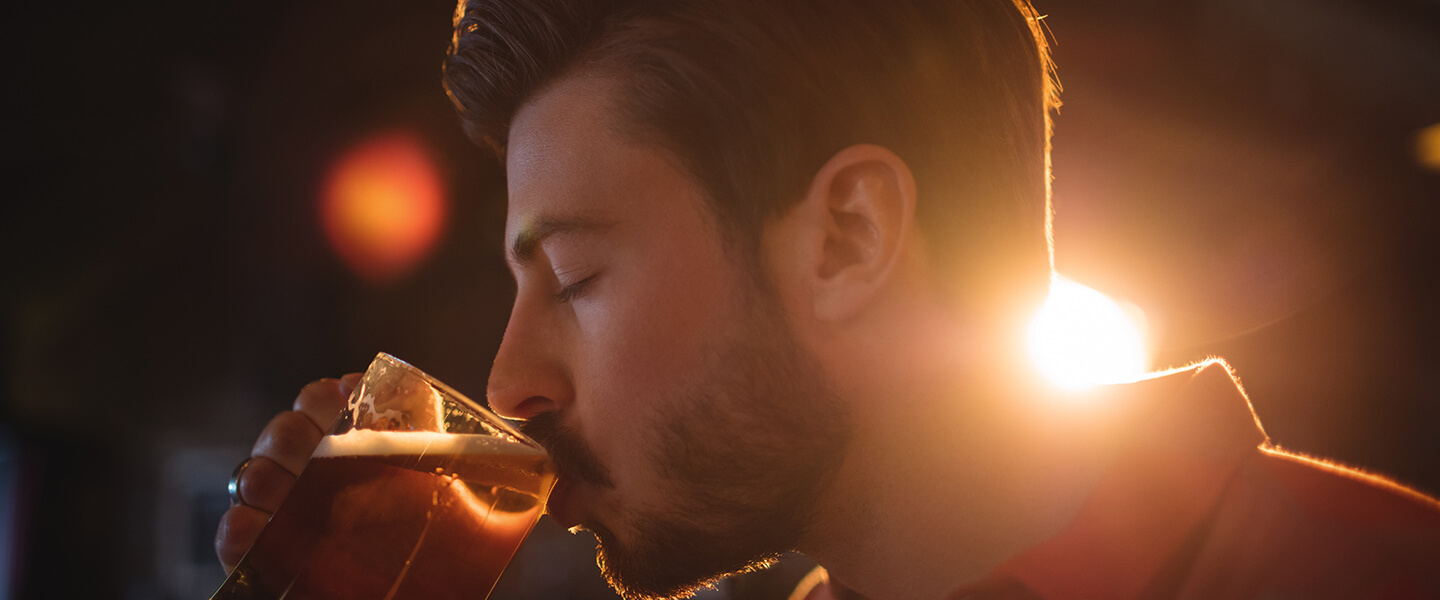Probing How Alcohol and Drinking Behaviors Change How Inhibitory Cortical Cells Function
Probing How Alcohol and Drinking Behaviors Change How Inhibitory Cortical Cells Function

As defined by the U.S. National Institute on Drug Abuse (NIDA), alcohol use disorder (AUD) is a medical condition characterized by an impaired ability to stop or control alcohol use despite adverse social, occupational, or health consequences. “It encompasses the conditions that some people refer to as alcohol abuse, alcohol dependence, alcohol addiction, and the colloquial term, alcoholism,” NIDA notes.
Now widely regarded a brain disorder, AUD can be mild, moderate, or severe. Research is steadily revealing how alcohol misuse causes changes in the brain that tend both to perpetuate AUD and make those who suffer vulnerable to relapse.
Although many who need treatment do not seek it—a major factor in the prevalence of AUD—there are many well-tested, evidence-based therapies, both talk therapies and medications, which can greatly help those affected. Meanwhile, intense efforts are under way in research labs worldwide to discover exactly how the intake of alcohol affects how the brain functions. It is in these investigations that hope lies for new and more effective therapies in the years ahead.
Results of one such investigation were recently reported in the journal Neuropharmacology by a team led by 2022 BBRF Young Investigator Max E. Joffe, Ph.D., of the University of Pittsburgh. “Breakthrough treatments are needed,” Dr. Joffe and colleagues began their new paper, noting that developing new pharmacological treatments “necessitates a deeper understanding of the mechanisms through which ethanol alters brain circuit function.”
Dr. Joffe’s team began from the widely accepted premise, based on past studies in animal models of AUD and studies in people, that difficulty in moderating drinking, as well as the mood and behavioral disruptions that often occur during abstinence, are both associated with operations of the brain’s prefrontal cortex (PFC), one of the key places where thoughts, actions, and emotions are integrated and regulated.
The broad goal of the team’s study was to achieve a better understanding of how specific cell types in the PFC are affected by ethanol and drinking behaviors. Pyramidal cells, excitatory cells in the PFC that account for the large majority of its neurons, regulate drinking through long-range projections to parts of the brain outside the cortex. But pyramidal cells are significantly regulated or modulated by comparatively small numbers of local inhibitory cells called interneurons. Interneurons come in a variety of subtypes, with a range of special functions. Some important subtypes reside in deeper layers of the cortex, while a larger variety of interneurons occupy so-called superficial, or outer, cortical layers.
A growing body of evidence suggests that alcohol consumption and alcohol dependence alter the activity of the various types of cortical interneurons, although precisely how is not well understood. It’s likely that distinct interneuron types undergo distinct adaptations when alcohol is chronically or acutely consumed, and perhaps also during periods of abstinence.
Dr. Joffe and colleagues focused on a type of interneuron in the cortex that is distinguished by its expression of a molecule called VIP (vasoactive intestinal peptide). While VIP has roles in many parts of the body, in the cortex it specifically is expressed by a common type of inhibitory interneuron, those that release the inhibitory neurotransmitter GABA. While there is reason to think that VIP interneurons (VIP-INs) have an important role in regulating the effects of drugs (and other salient experiences), the team wanted to break new ground by studying how they are impacted when alcohol in consumed and during drinking behaviors.
To determine this, the team studied cortical slices and brain cells sampled from mice that were habituated to drinking ethanol, as well as to mice that were regular drinkers but denied ethanol during a period of forced abstinence.
The researchers found that ethanol acutely enhances the excitability of VIP-INs; this evidence was gathered from cells sampled from cortical brain slices. By contrast, in living mice that were conditioned to be chronic voluntary drinkers, VIP-INs fired less often than in comparable control mice that drank only water. It was also noted that in alcohol-drinking mice, the minimum level of electrical activity needed to make a neuron fire was higher than in control mice. These results, although seemingly paradoxical, were consistent with the broad notion that drinking causes a reduction in the excitability of VIP-INs--that VIP-INs over time undergo compensatory changes to counteract ethanol's impact. This change is interpreted by the team as homeostatic—the organism’s attempt to stabilize itself in the presence of an altered external condition, in this case, alcohol ingestion. Finally, the team noted that in male mice, but not in females, drinking-induced changes in VIP-INs persisted over the course of 1 to 2 weeks of forced abstinence.
These results will spur the team to determine, in follow-up studies, the mechanisms underlying these changes in VIP-INs that are associated with alcohol consumption, and to further assess their relevance for drinking behaviors. This knowledge, in turn, could be directly relevant to the development of new treatment targets.
The team speculated in its paper as to some of the possible mechanisms that, for example, led to an increase in VIP-IN excitability in the presence of alcohol. One is that alcohol might inhibit potassium channels that typically reduce interneuron activity in the PFC. If proven, this hypothesis could provide more evidence to support the testing of a drug called retigabine, which “potentiates” such ion channels, and has been observed to act as an attenuator of alcohol consumption in rodent studies.
The notion that drinking “precipitates a homeostatic change in VIP-IN membrane physiology,” relevant to ion channels and voltage, as well as the observation that VIP-IN excitability after abstinence differed according to sex, are among the phenomena that future studies now will address, the team said.
In concluding, the team said: “It is tempting to speculate that changes in VIP-IN activity following alcohol consumption are involved in affective disturbances and in heightened sensitivity to pain observed in many individuals with AUD. It will also be important to assess whether VIP-INs in other cortical areas respond to ethanol and adapt following chronic drinking.”



